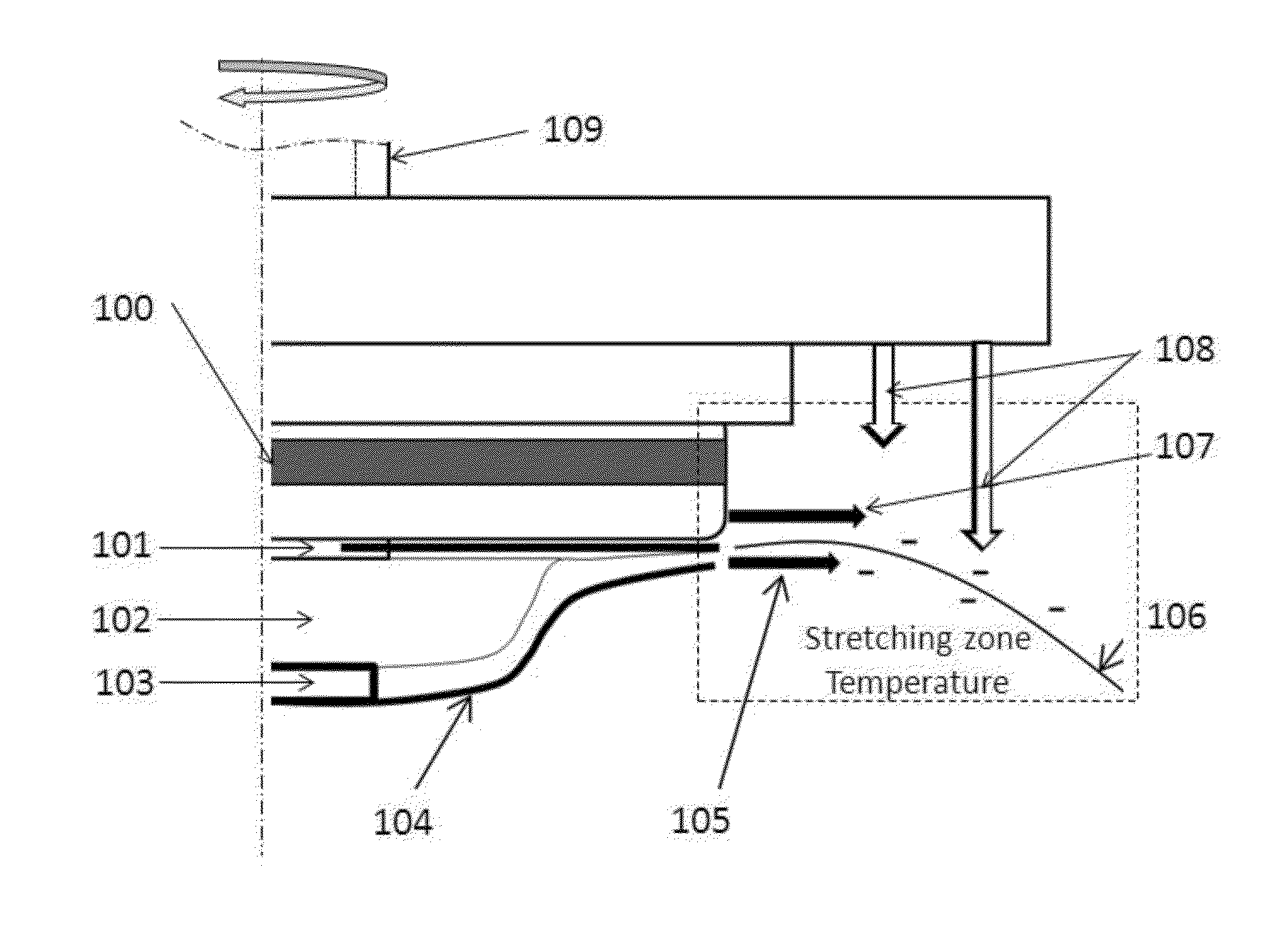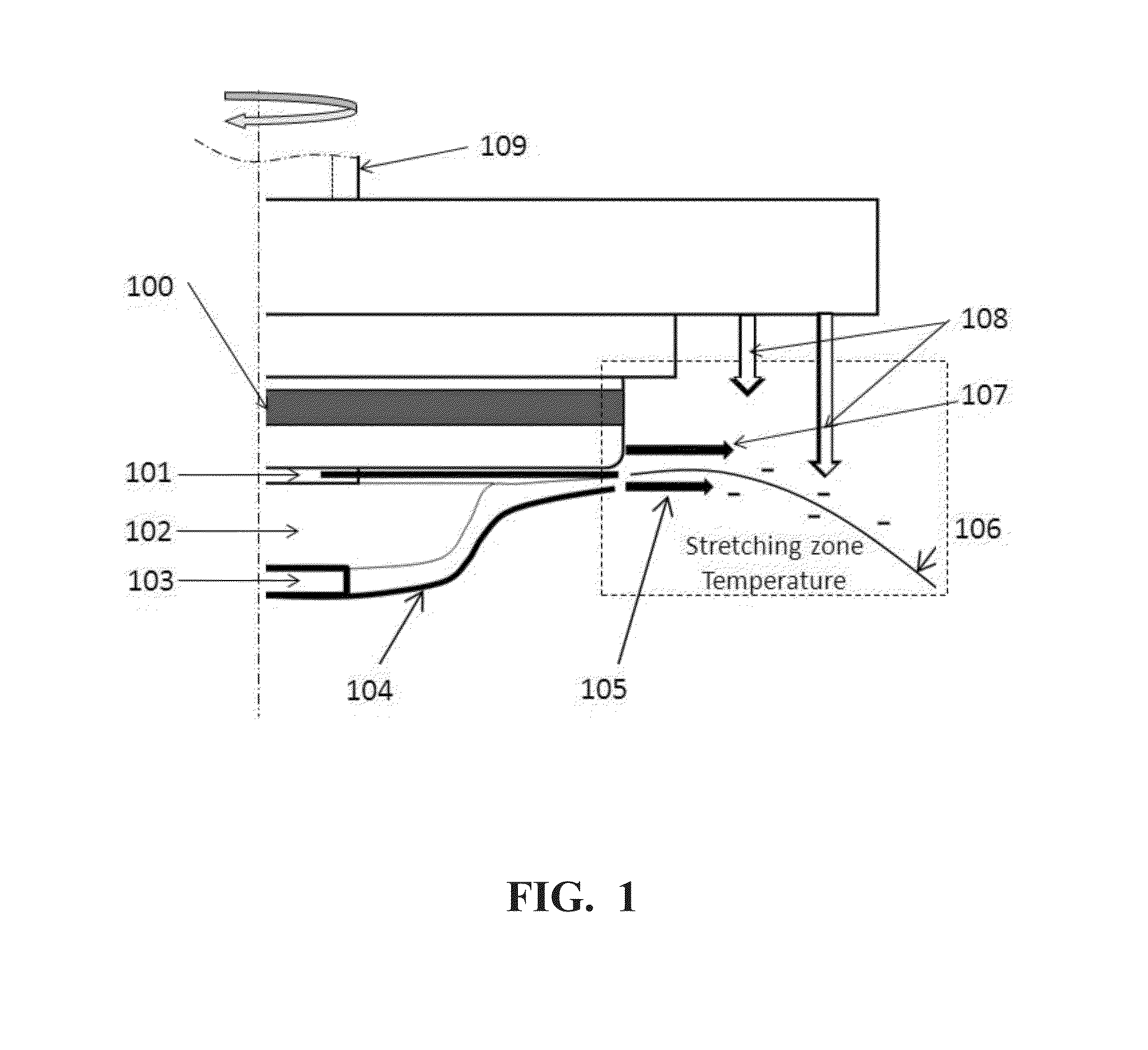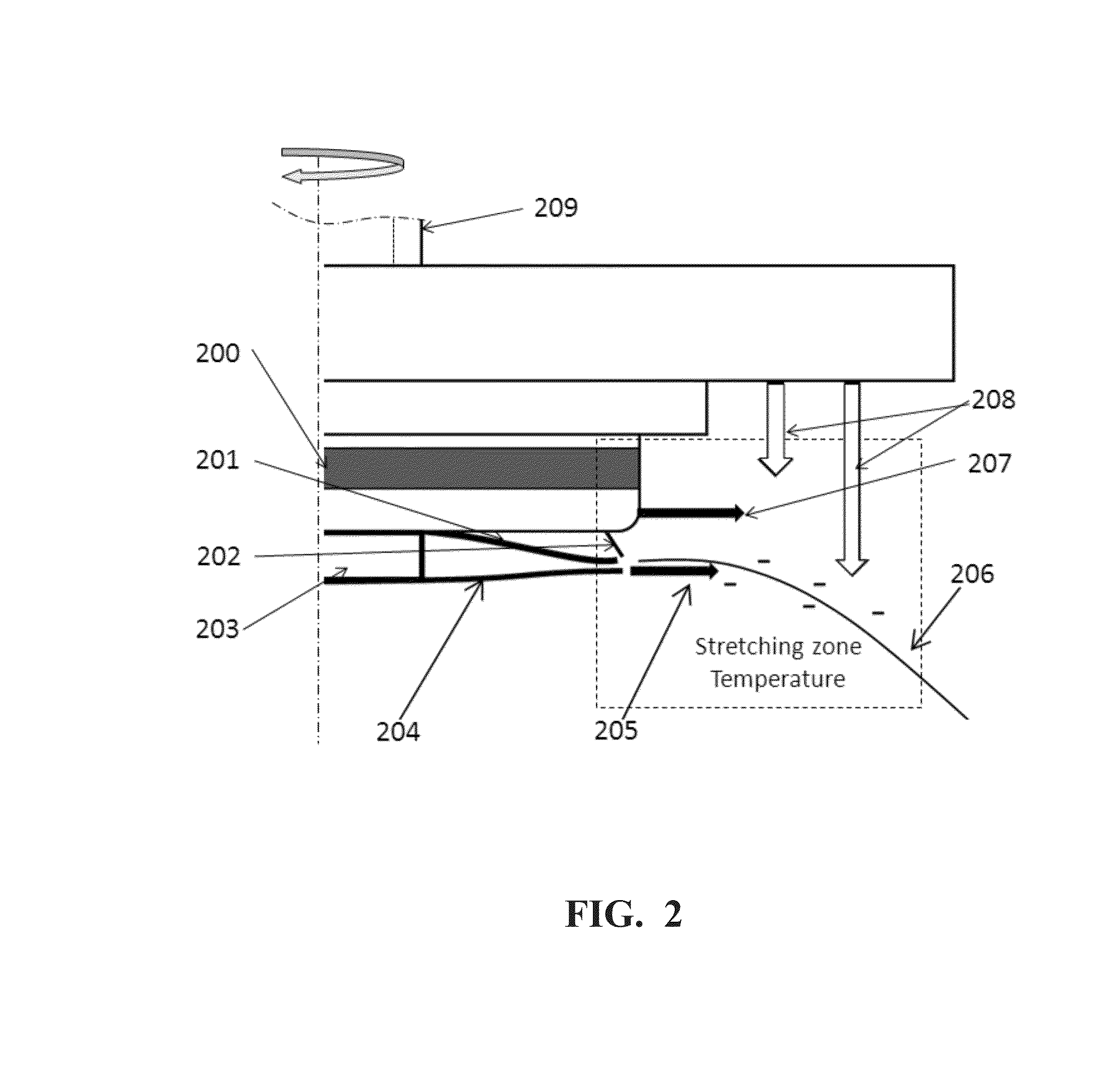Apparatus for production of polymeric nanofibers
- Summary
- Abstract
- Description
- Claims
- Application Information
AI Technical Summary
Benefits of technology
Problems solved by technology
Method used
Image
Examples
example 1
[0092]Continuous fibers were made by a spin disk with the enclosed serrations and the stationary shield using an apparatus as illustrated in FIG. 1, from a polypropylene (PP) homopolymer, Metocene MF650Y from LyondellBasell. It has Mw=75,381 g / mol, melt flow rate=1800 g / 10 min (230° C. / 2.16 kg), and zero shear viscosity of 9.07 Pa·S at 200° C. A PRISM extruder with a gear pump was used to deliver the polymer melt to the rotating spin bowl through melt transfer line. The temperature of the spinning melt from the melt transfer line was set to 240° C. The temperature of spin disk edge was about 200° C. The stretching zone heating air was set at 200° C. The stretching zone air through the gap between the disk and the stationary shield was set at 200° C. with the air flow rate of 50 SCFH. The downward shaping air was set at 150° C. The shaping air flow was set at 50 SCFH. The rotation speed of the spin disk was set to a constant 12,000 rpm.
[0093]The fiber size was measured from an image ...
PUM
| Property | Measurement | Unit |
|---|---|---|
| Fraction | aaaaa | aaaaa |
| Fraction | aaaaa | aaaaa |
| Diameter | aaaaa | aaaaa |
Abstract
Description
Claims
Application Information
 Login to View More
Login to View More - R&D
- Intellectual Property
- Life Sciences
- Materials
- Tech Scout
- Unparalleled Data Quality
- Higher Quality Content
- 60% Fewer Hallucinations
Browse by: Latest US Patents, China's latest patents, Technical Efficacy Thesaurus, Application Domain, Technology Topic, Popular Technical Reports.
© 2025 PatSnap. All rights reserved.Legal|Privacy policy|Modern Slavery Act Transparency Statement|Sitemap|About US| Contact US: help@patsnap.com



